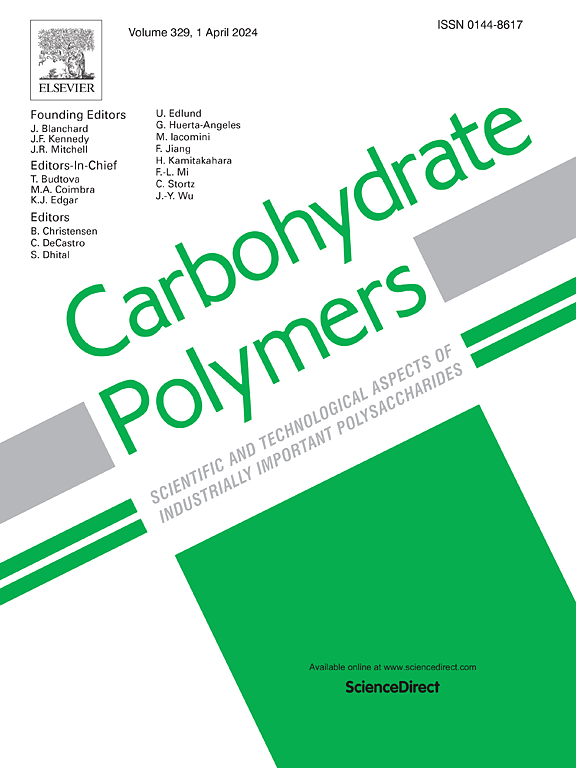A sustainable alginate-based multifunctional porous material with integrated thermal barrier and reversible fire warning for enhanced building protection
IF 12.5
1区 化学
Q1 CHEMISTRY, APPLIED
引用次数: 0
Abstract
The need for innovative bio-based building material development that solves excessive energy consumption and environmental sustainability and enables thermal barrier with sensitive early fire warnings is urgent. This study focuses on developing a sustainable multifunctional SNAP (sodium alginate/nickel oxide/ammonium polyphosphate/polypyrrole) porous material, fabricated by incorporating sodium alginate (NaAlg) as the primary structural matrix, ammonium polyphosphate (APP) as a flame retardant, nickel oxide (NiO) for temperature sensing and enhanced flame retardancy, and polypyrrole (PPy) to improve electrical conductivity for fire warning functionality. The inclusion of APP, NiO, and PPy significantly improved the limiting oxygen index to 48.7 %, and a robust char layer during flame exposure provided effective thermal barrier and self-extinguishing properties. The porous material exhibited thermal conductivity of 0.076 W·m−1·K−1. The synergistic integration of NiO and PPy enhanced temperature sensing and electrical conductivity, enabling ultrafast (0.9 s) flame detection and a stable fire warning period of 227 s (under continuous exposure) with reversible warning characteristics. Post-crosslinking with Ca2+ ion improved mechanical strength (0.32 MPa) and maintained stability up to 48 h of immersion in deionized water. This innovative, environmentally friendly composite material holds significant promise in advanced building materials where high fire safety and early warning systems are critical.

一种可持续发展的海藻酸盐多功能多孔材料,具有综合热障和可逆火灾报警功能,增强建筑物保护
迫切需要创新的生物基建筑材料的开发,以解决过度的能源消耗和环境可持续性,并实现具有敏感的早期火灾预警的热障。本研究以海藻酸钠(NaAlg)为主要结构基体,聚磷酸铵(APP)为阻燃剂,氧化镍(NiO)用于温度传感和增强阻燃,聚吡咯(PPy)用于提高电导率以实现火灾报警功能,开发一种可持续的多功能SNAP(海藻酸钠/氧化镍/聚磷酸铵/聚吡咯)多孔材料。APP、NiO和PPy的加入将极限氧指数显著提高至48.7%,并且在火焰暴露过程中形成坚固的炭层,提供了有效的热障和自熄性能。多孔材料的导热系数为0.076 W·m−1·K−1。NiO和PPy的协同集成增强了温度传感和导电性,实现了超快(0.9 s)的火焰探测和227 s的稳定火灾报警时间(连续暴露下),具有可逆报警特性。与Ca2+离子交联后提高了机械强度(0.32 MPa),并在去离子水中浸泡48 h后仍保持稳定性。这种创新的、环保的复合材料在高级建筑材料中具有重要的前景,其中高防火安全性和早期预警系统至关重要。
本文章由计算机程序翻译,如有差异,请以英文原文为准。
求助全文
约1分钟内获得全文
求助全文
来源期刊

Carbohydrate Polymers
化学-高分子科学
CiteScore
22.40
自引率
8.00%
发文量
1286
审稿时长
47 days
期刊介绍:
Carbohydrate Polymers stands as a prominent journal in the glycoscience field, dedicated to exploring and harnessing the potential of polysaccharides with applications spanning bioenergy, bioplastics, biomaterials, biorefining, chemistry, drug delivery, food, health, nanotechnology, packaging, paper, pharmaceuticals, medicine, oil recovery, textiles, tissue engineering, wood, and various aspects of glycoscience.
The journal emphasizes the central role of well-characterized carbohydrate polymers, highlighting their significance as the primary focus rather than a peripheral topic. Each paper must prominently feature at least one named carbohydrate polymer, evident in both citation and title, with a commitment to innovative research that advances scientific knowledge.
 求助内容:
求助内容: 应助结果提醒方式:
应助结果提醒方式:


